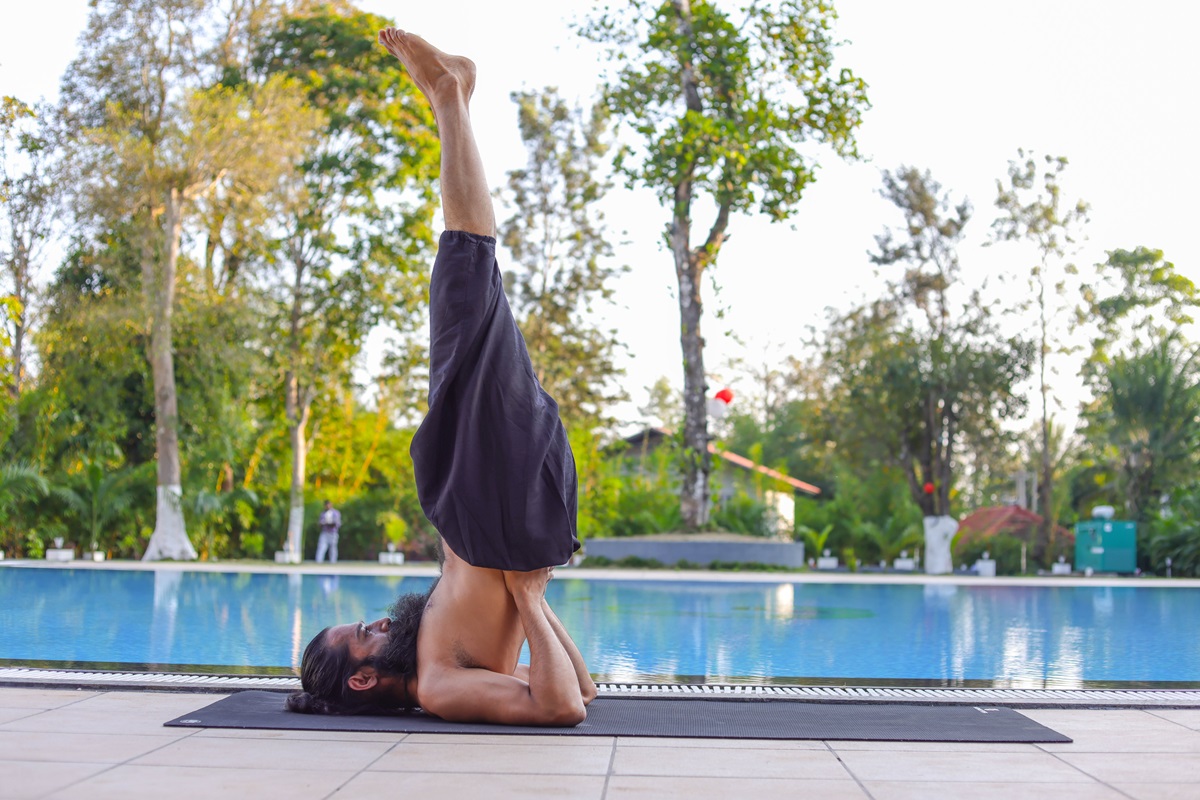How yoga practices can contribute to hormonal balance, addressing conditions such as polycystic ovary syndrome (PCOS) and thyroid disorders.
Yoga practices play a crucial role in promoting hormonal balance, offering potential benefits for individuals dealing with conditions like polycystic ovary syndrome (PCOS) and thyroid disorders. These conditions can significantly impact hormonal levels, leading to various health challenges. Through specific yoga asanas (postures), pranayama (breath control), and meditation, individuals may find relief and support in managing hormonal imbalances.
Yoga for PCOS:
PCOS is a common hormonal disorder affecting people with reproductive age. It is characterized by irregular menstrual cycles, high levels of androgens (male hormones), and ovarian cysts. Yoga can help manage PCOS symptoms by addressing hormonal fluctuations and improving overall well-being.
Asanas such as Supta Baddha Konasana (Reclining Bound Angle Pose) and Bhujangasana (Cobra Pose) can stimulate the reproductive organs and regulate hormonal balance.
Pranayama, especially Nadi Shodhana (Alternate Nostril Breathing), can enhance hormonal harmony and reduce stress, a factor that often exacerbates PCOS symptoms.
Meditation and mindfulness practices can contribute to stress reduction, positively impacting hormonal regulation.
Yoga for Thyroid Disorders:
Thyroid disorders, including hypothyroidism and hyperthyroidism, involve an imbalance in thyroid hormone production. Yoga offers a holistic approach to support thyroid health, promoting balance in the endocrine system.
Sarvangasana (Shoulder Stand) and Halasana (Plow Pose) are beneficial for stimulating the thyroid gland and improving its function.
Pranayama techniques
Kapalbhati Pranayama, a dynamic breathing technique, can boost metabolism and support thyroid function.
Ujjayi Pranayama (Victorious Breath) helps balance the endocrine system, aiding in thyroid regulation.
Overall Hormonal Balance:
In addition to specific asanas for PCOS and thyroid disorders, incorporating a regular yoga practice can contribute to overall hormonal balance. Stress management, a key element in hormonal health, is addressed through various yoga techniques.
Yoga Nidra, a form of guided relaxation, can significantly reduce stress and promote hormonal equilibrium.
Savasana (Corpse Pose) at the end of a yoga session allows the body to enter a deep state of relaxation, fostering hormonal balance.
Balasana (Child’s Pose) is a restorative pose that calms the nervous system, indirectly impacting hormone levels.
Healing walk
Lift your arms up keeping them at shoulder width distance. Now, start walking with your arms raised in this position and your hands can be up in the air for 1-3 minutes. Initially this may not be possible as you will have to train the muscles of your arms and shoulders and strengthen them. Build up to 1-3 minutes gradually by starting of with a minute increase and so on until you are physically capable enough with the strength required to hold your arms up for 1-3 minutes straight. One round practice will require you to perform a minimum of three sets of these walks of minimum 1-3 minutes each.
Mind-Body Connection:
Yoga emphasizes the connection between the mind and body, recognizing that mental well-being is integral to hormonal balance. Practices like meditation and mindfulness enhance self-awareness, reducing the impact of stress on hormonal health.
Regular meditation practices, such as Mindful Breathing or Swaas Dhyan, can positively influence the hypothalamus-pituitary-adrenal (HPA) axis, a key player in hormonal regulation.
Yoga encourages a healthy lifestyle, including mindful eating, which can support hormonal balance.
Incorporating yoga practices into a routine can be a valuable complement to conventional treatments for hormonal imbalances, including PCOS and thyroid disorders. It offers a holistic approach, addressing physical, mental, and emotional aspects of well-being. By embracing the simplicity and effectiveness of yoga, individuals can take proactive steps toward achieving hormonal balance and overall health.




